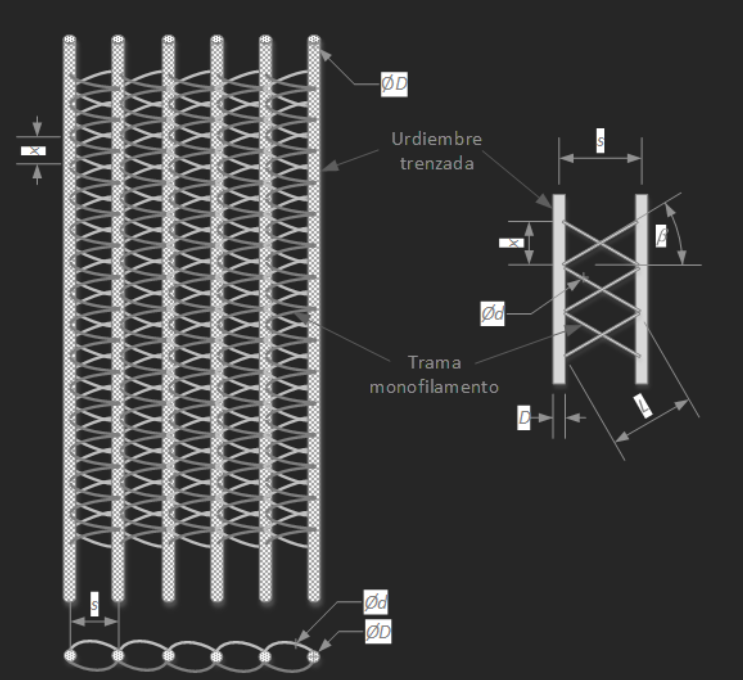The present technology consists of a water collector device for suspended water such as fog. This
device is constructed with several mesh with vertical threads, which are closely spaced in a harp-like
shape, thereby optimizing the water capture rate from fog.
This structuring of the collector solves three of the major problems encountered in classical models:
1. Fragility of the Raschel mesh, which easily breaks in the presence of wind currents.
2. Bottleneck failure due to the air not being forced to pass through the densest area of the sieve.
3. Failure to minimize area, because the dense area is not aligned with the frontal area.
This water collector design optimizes several key aspects: the number of mesh, the diameter of the threads, the spacing between them, and the harp-like arrangement, all in a vertical configuration. Thus, the densest area does not align with the frontal area of the collector, avoiding minimization flaw, and it does not force the air to pass only through the densest zone, avoiding the bottleneck flaw. Additionally, the construction of this system increases its resistance to wind. Figure 1: Aerial view of the two collector designs. The classic collector (A) has one or more layers (blue dots) extending along the frame (squares), resulting in each layer's area being limited to the frontal area of the collector, causing the two aforementioned failures. In contrast, our design (B) avoids both problems by not having both panels in parallel, resulting in our collector's area being 25% larger than that of a classic one. Figure 2: Technical diagram of the threads placed in the collector's sieve. The separation size, angles, and quantity of threads are specified, among other things
Current development status
Others
Technology tested in a simulated environment
Desired business relationship
Patent licensing









